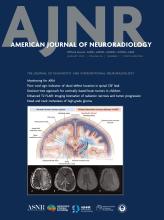This article requires a subscription to view the full text. If you have a subscription you may use the login form below to view the article. Access to this article can also be purchased.
Graphical Abstract
SUMMARY:
Cortically based brain tumors in children constitute a unique set of tumors with variably aggressive biologic behavior. Because radiologists play an integral role on the multidisciplinary medical team, a clinically useful and easy-to-follow flow chart for the differential diagnoses of these complex brain tumors is essential. This proposed algorithm tree provides the latest insights into the typical imaging characteristics and epidemiologic data that differentiate the tumor entities, taking into perspective the 2021 World Health Organization’s classification and highlighting classic as well as newly identified pathologic subtypes by using current molecular understanding.
ABBREVIATIONS:
- AB
- astroblastoma
- AG
- angiocentric glioma
- ATRT
- atypical teratoid/rhabdoid tumor
- BCOR-ITD
- BCOR internal tandem duplication
- DGONC
- diffuse glioneuronal tumor with oligodendroglioma-like features and nuclear clusters
- DHG
- diffuse hemispheric glioma, H3G34-mutant
- DIA
- desmoplastic infantile astrocytoma
- DIG
- desmoplastic infantile glioma
- DNET
- dysembryoplastic neuroepithelial tumor
- EP
- ependymoma
- ETMR
- embryonal tumors with multilayered rosettes
- FCD
- focal cortical dysplasia
- GG
- ganglioglioma/gangliocytoma
- ICP
- intracranial pressure
- IHG
- infant-type hemispheric glioma
- LEAT
- long-term epilepsy-associated tumor
- MVNT
- multinodular and vacuolating neuronal tumor
- NB-FOXR2
- CNS neuroblastoma, FOXR2-activated
- OS
- overall survival
- pHGG
- pediatric diffuse high-grade gliomas
- pLGG
- pediatric diffuse low-grade gliomas
- PLNTY
- polymorphous low-grade neuroepithelial tumor of the young
- PXA
- pleomorphic xanthoastrocytoma
- ST
- supratentorial
- WHO
- World Health Organization
- © 2025 by American Journal of Neuroradiology













